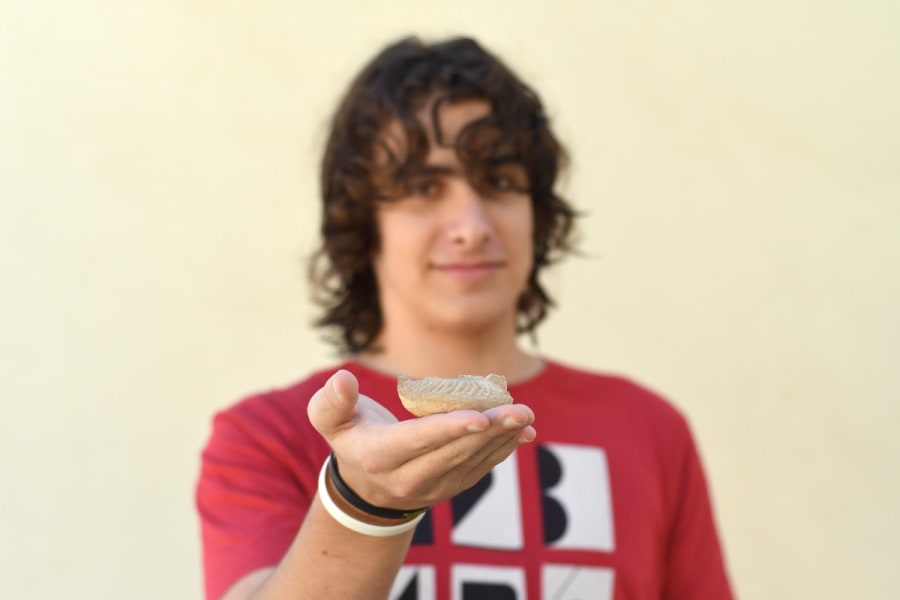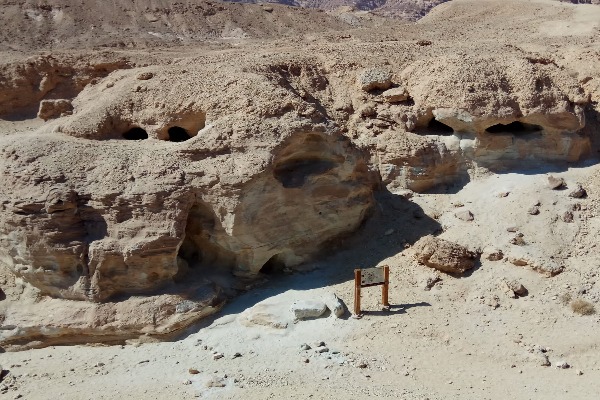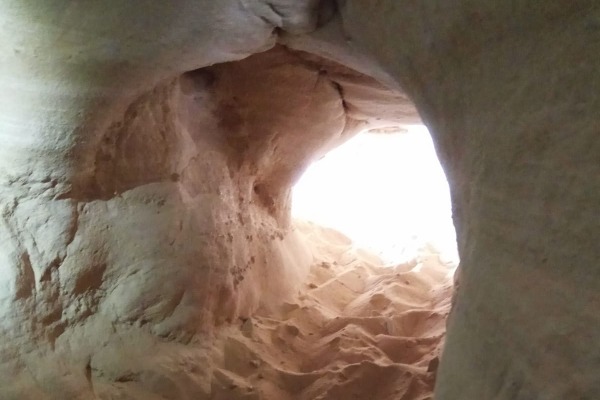Unique 1,600-yr-old Roman oil lamp unearthed by Israeli student in Negev Desert
Identical lamp was found ninety years prior at same location

A 1600-year-old oil lamp, discovered by a student from Hod Hasharon, unveiled new insights into the lives of Roman soldiers stationed at a fort along the Scorpions Ascent, located in the modern Israeli Negev desert.
During an annual excursion along the Scorpions Ascent, once part of a vital trade route for metals like copper and potentially gold, Yonatan Frankel, a 16-year-old student from Tamar High School in Hod Hasharon, stumbled upon the ancient artifact.
Engrossed in examining rocks during a lunch break beside the Late Roman fort of Mezad Tzafir, Frankel's attention was captivated by a seemingly ordinary stone.
"One of the stones that I picked up was full of dirt. I shook it off, and suddenly I saw a design. Then, I understood that this was a man-made object and not just a stone."

Frankel promptly showed the lamp to his teacher, who in turn presented it to their tour guide. Ultimately, the lamp found its way to Alex Freiberg, an archaeologist with the Israel Antiquities Authority (IAA) in the Southern Negev District. Transferring antiquities like this to the IAA is required by Israeli law.
Every man-made artifact dated before the 18th century C.E. is considered an antiquity in Israel. Frankel's astute discovery earned him recognition for both his archaeological find and commendable citizenship.

The lamp, originating from Petra in Jordan during the 4th-5th centuries C.E., sparked enthusiasm in Dr. Tali Erickson-Gini, a senior IAA researcher. Despite its partial preservation, the lamp's resemblance to one unearthed 90 years earlier by archaeologist Nelson Glueck at the same site intrigued Erickson-Gini.
She remarked: "Lamps of this type were uncovered at Mezad Hazeva, and also at Mamshit, Mezad Yotvata, and Petra, but the lamp Frankel found is identical to one discovered in the same place 90 years ago (!)"

The discovery sheds light on the strategic significance of Mezad Tsafir, situated along the trade route between the Nabataean-Roman town of Mamshit and the copper mines of Feinan (mentioned as “Funon” in the Bible) in the central Arava Valley, on the Jordanian side.
Constructed to safeguard shipments of copper and possibly gold, the fort stood as an essential outpost. Mounted patrols diligently patrolled the path, shedding light on the solitary, remote fort with lamps similar to the one discovered by Frankel.

Feinan, or “Funon” is a well-known Jordanian copper mine, located to the north of another copper mine in the Timna Valley. In the past, they were part of one geological formation, but due to the split of the tectonic plates, the formation of the “Bek’a” of the Arava and the Dead Sea as a part of the Syrian-African main rift, they separated into two.
Today Funon is located much farther to the north and Timna to the south, showing the movement of the Asian tectonic plate to the north, and the Israeli-Sinai plate (or Sinai-African plate) to the south. Funon mine, together with Timna, was exploited from very ancient times for their copper, even during King Solomon's time (10th century B.C.) as some scholars believe.

Expressing gratitude for Frankel's contribution, IAA Director Eli Escusido noted the importance of each discovered object.
"Every object that is turned over to us is kept by the National Treasures department and each object can shed significant light (as is indeed the case here) about our past."

The All Israel News Staff is a team of journalists in Israel.













